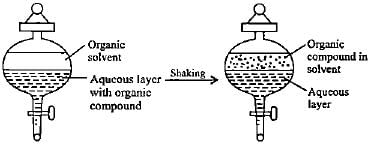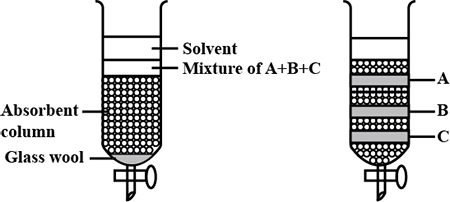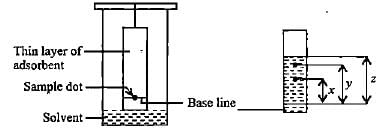Test: Methods of Purification of Organic Compounds (NCERT) - NEET MCQ
10 Questions MCQ Test - Test: Methods of Purification of Organic Compounds (NCERT)
Separation of two substances by crystallisation depends upon their differences In
Those substances can be separated by steam distillation which are
Glycerin can be purified by:
Distillation under reduced pressure Is generally used to purify those liquids which
Which method can be applied to separate a mixture of camphor and benzole add?,
The process of separation of an organic compound from its aqueous solution by shaking with a suitable solvent is termed solvent extraction or differential extraction.

The organic compound present in the aqueous layer moves to the organic solvent because
The substance which can be used as adsorbent in column chromatography is
Given below is the column of adsorbent in which the mixture of the compounds A + B + C is placed. When the solvent is poured through the column, the components are separated depending upon the degree of adsorption. Which of the given statements is correct?

Given below is the developed chromatogram of a mixture of pigments.

Rf values for x and y can be expressed as
Few mixtures and their methods of separation are given in the columns I and II respectively. Match the columns and mark the appropriate choice.
















